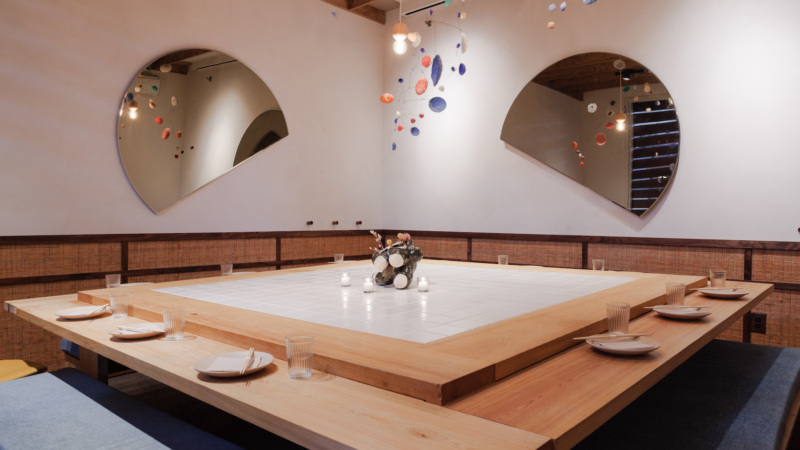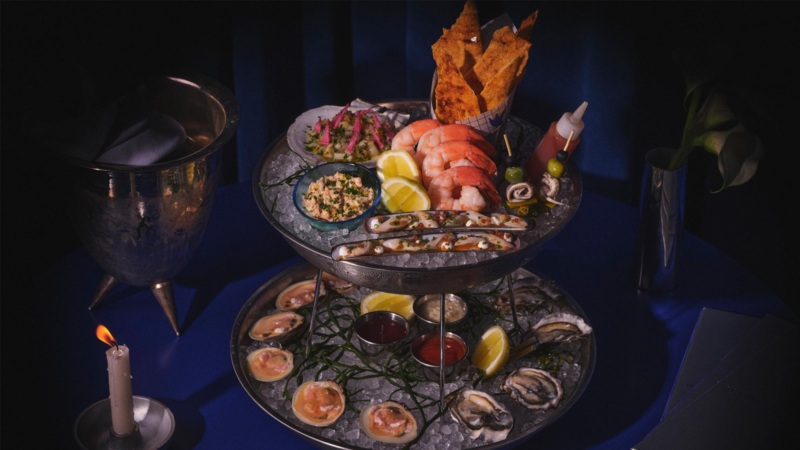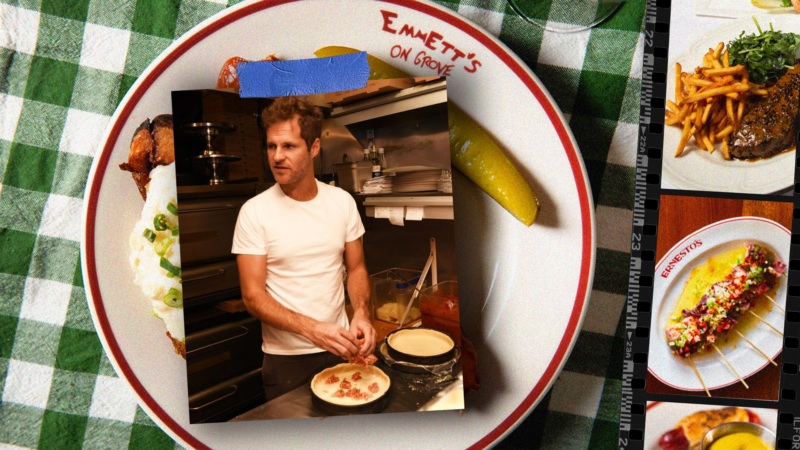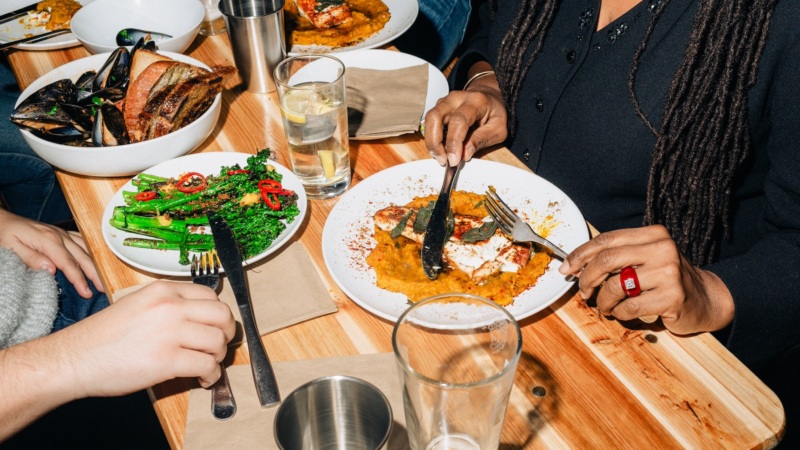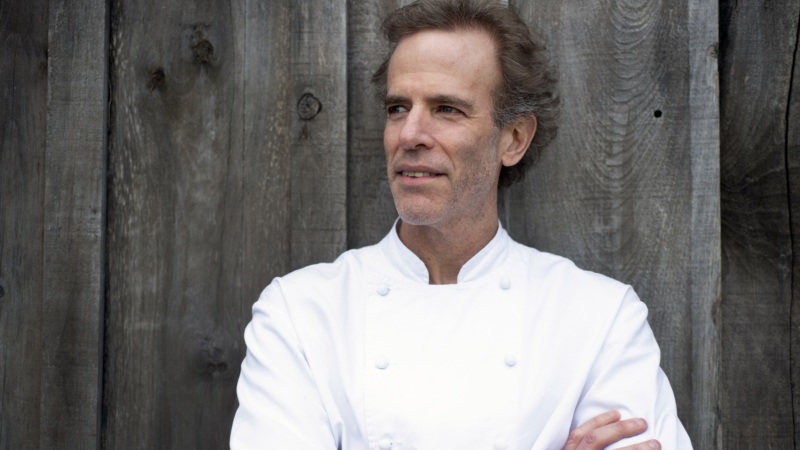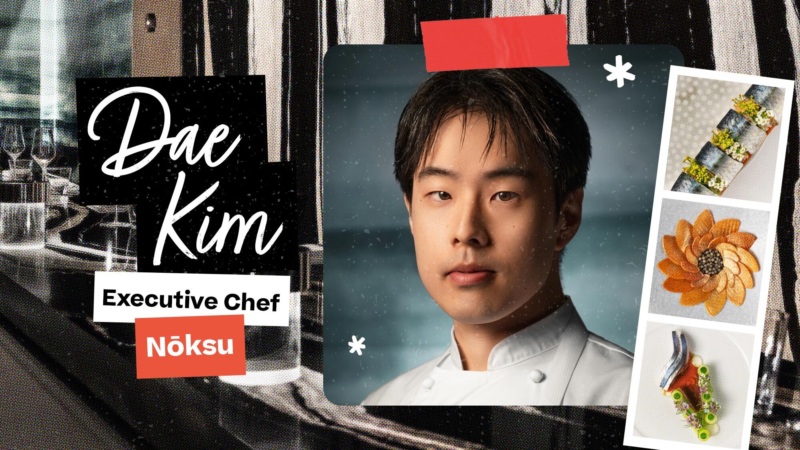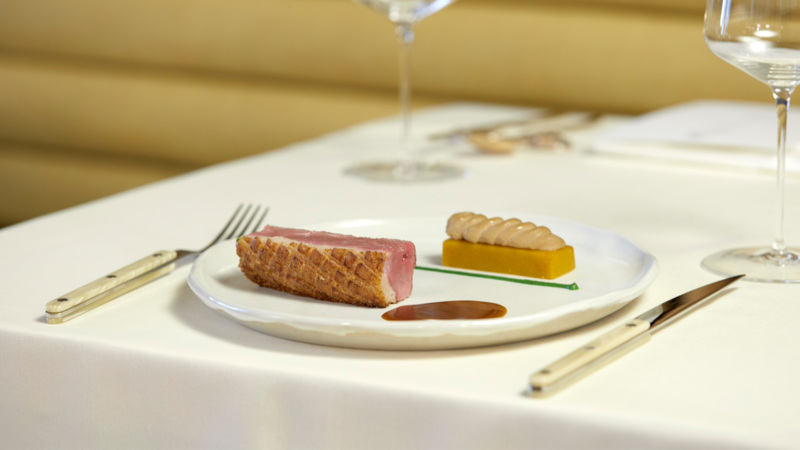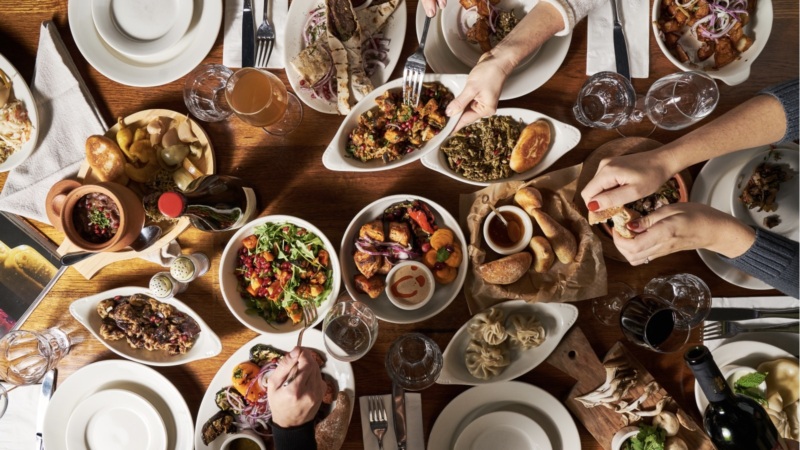
Legendary Pastry Chef Claudia Fleming: The Future of Desserts Is Going Back to Basics
“It’s been a mad, mad couple of days. But exciting,” Claudia Fleming confides, hinting at something new she’s been working on in her role as corporate pastry director for Danny Meyer’s Union Square Hospitality Group (USHG). It’s quite a change of pace, she admits, from her days in a country cottage out on North Fork, Long Island a couple of years ago.
Of course, to anyone who’s been eating desserts in this country — or making them from Fleming’s cult-classic book, The Last Course, which was reissued in 2019 — the Long-Island born pastry chef needs no introduction. While helming the dessert program at Gramercy Tavern from 1994 to 2002, she earned critical raves and a devoted following for a style that was all her own: cosmopolitan yet completely American, classic but unfailingly fresh, luscious but streamlined. It was a vision that anticipated today’s trends of incorporating salty and herbal accents into desserts, combining contrasting textures and temperatures, and borrowing a savory kitchen’s local and seasonal ethos. There was her now-legendary chocolate caramel tart flecked with sea salt, her buttermilk panna cotta with a seasonal fruit gelée, and her coconut-tapioca pudding highlighted with basil syrup — all creations that brought new attention to the final course of the meal and influenced a new generation of pastry chefs.
Then, in 2005, the reigning queen of New York City’s dessert scene — crowned as the James Beard Foundation’s Outstanding Pastry Chef — gave it all up and moved to the country with her husband, chef Gerry Hayden, to open the North Fork Table & Inn in Southold, Long Island. Fleming’s legions of city fans must have felt orphaned. But as innkeepers, Fleming and Hayden gained a new following for their farm-to-table cuisine and warm hospitality. Tragically, Hayden passed away in 2015. And in 2020, thinking of her next step, Fleming called up her old boss, Danny Meyer, who couldn’t wait to welcome her back. Upon her return to USHG in 2021, Fleming wasted no time turning a seemingly simple strawberry scone for Daily Provisions into a sought-after sensation. She also created new classics for USHG’s new Italian venture, Ci Siamo in the Manhattan West complex.
Resy spoke to Fleming about her remarkable career, the process of creating desserts, and, yes, those strawberry scones.
Resy: You’ve had a fascinating career trajectory. From aspiring ballet dancer to dessert diva of Gramercy Tavern, then country innkeeper, followed by your recent triumphant comeback to New York. Looking back, how do you see it?
Fleming: To me it just felt like a natural progression, I don’t think in terms of dramatic narratives. Yes, I danced but [that was] a long time ago. And all the while I was already working in restaurants and totally loving it, unlike other creatives who were ashamed to wait tables. That was the mid-1980’s, the beginning of truly American restaurant cuisine as we know it: Larry Forgione at An American Place, Charlie Palmer at River Café. The turn away from Euro-centric white tablecloths and fleur-de-lis logos. A real American identity was being developed and I got enthusiastically sucked into it working at Jonathan Waxman’s Jam, where the dessert chef was a protege of Nancy Silverton. It was an exciting moment in American food.
While at Gramercy Tavern you pioneered so many things that seem obvious now: salty and savory elements, seasonality, a simplicity that’s so perfectionist, actually.
The salt things, don’t get me started; it’s so overdone now. Why do you need salt on strawberries? Seriously, though, I don’t want to take credit for all those innovations. I guess I was in the right place at the right time working for a Danny Meyer-Tom Colicchio restaurant which just had so much visibility. I’m not into “presentation” or over-wrought plated desserts. I guess I always was a frustrated cook, poking for inspirations in the savory kitchen. So, my style just followed naturally.
Yet you went to France to apprentice at pastry shops. Does that style of sweets and your own experience there feel relevant at all now?
American restaurant dessert culture is very stylized and arranged, but you don’t always learn real techniques. I felt like I needed a base. Technique is the basis of creativity. And France seemed like a logical place. I wasn’t that interested in gâteaux and mousses, but the experience was still really impactful: the production system; the systematization of tasks, the professionalization of trade. I still remember at Fauchon in Paris, how at 1 p.m. everyone stopped whatever they were doing and started making macarons: it was 35 people all making the same thing, and it felt like some fantasyland. And that was at a time when most Americans didn’t even know what a macaron was.
And then at the pinnacle of your New York career you left it all to open a country inn on North Fork, Long Island with your husband, Gerry Hayden. How was that?
The most difficult thing I did in my life! Going from USHG’s “Disneyland” of everything you ever wanted always [being] available, to suddenly running your own business where everything was a crisis. It was exhausting and debilitating but also so gratifying, to create something special and truly beloved: an institution. That experience seems so beautiful now, despite all the hardships. Plus we were part of that farm-to-table “moment,” working with incredible producers from just down the road who supplied us with some of this country’s finest cheeses and veggies and poultry. We were a community.
So why leave it all that to come back to New York?
The inn was Gerry’s project ultimately, and I always supported it. But when he passed away, it didn’t make sense to go on living out someone else’s dream.
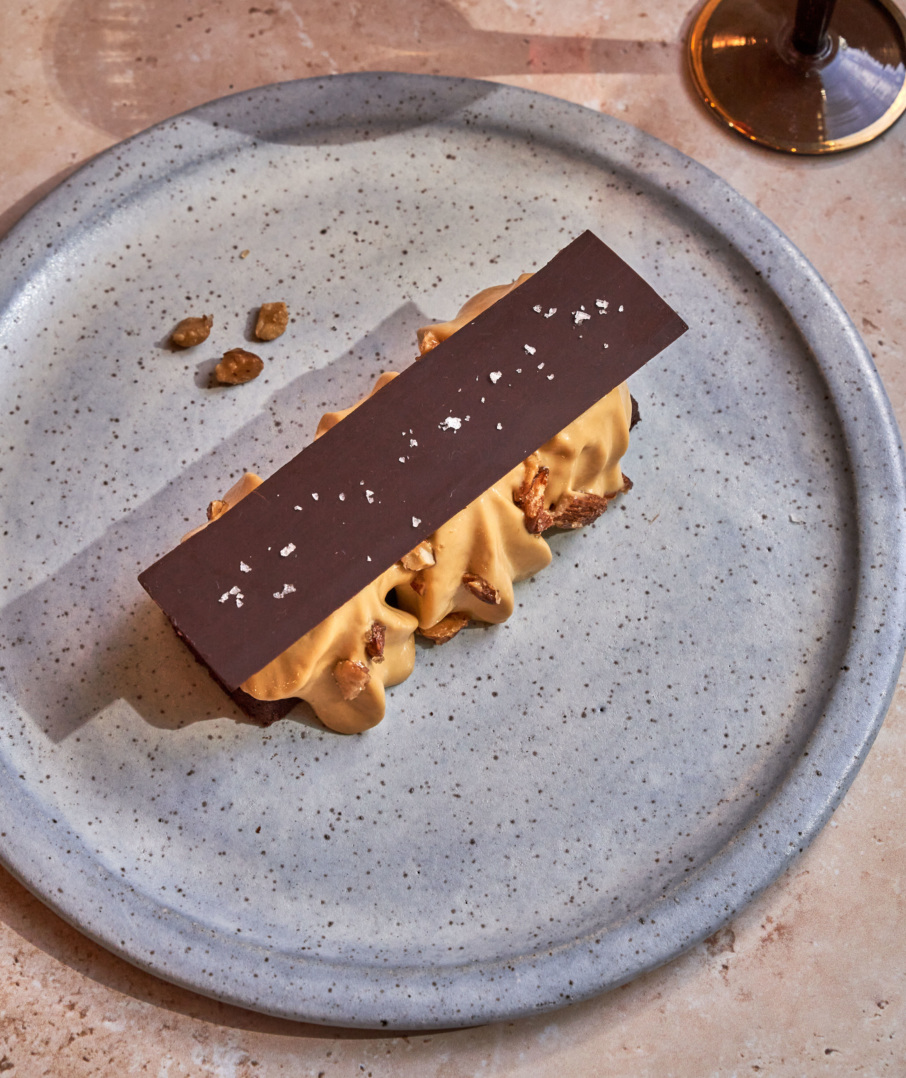
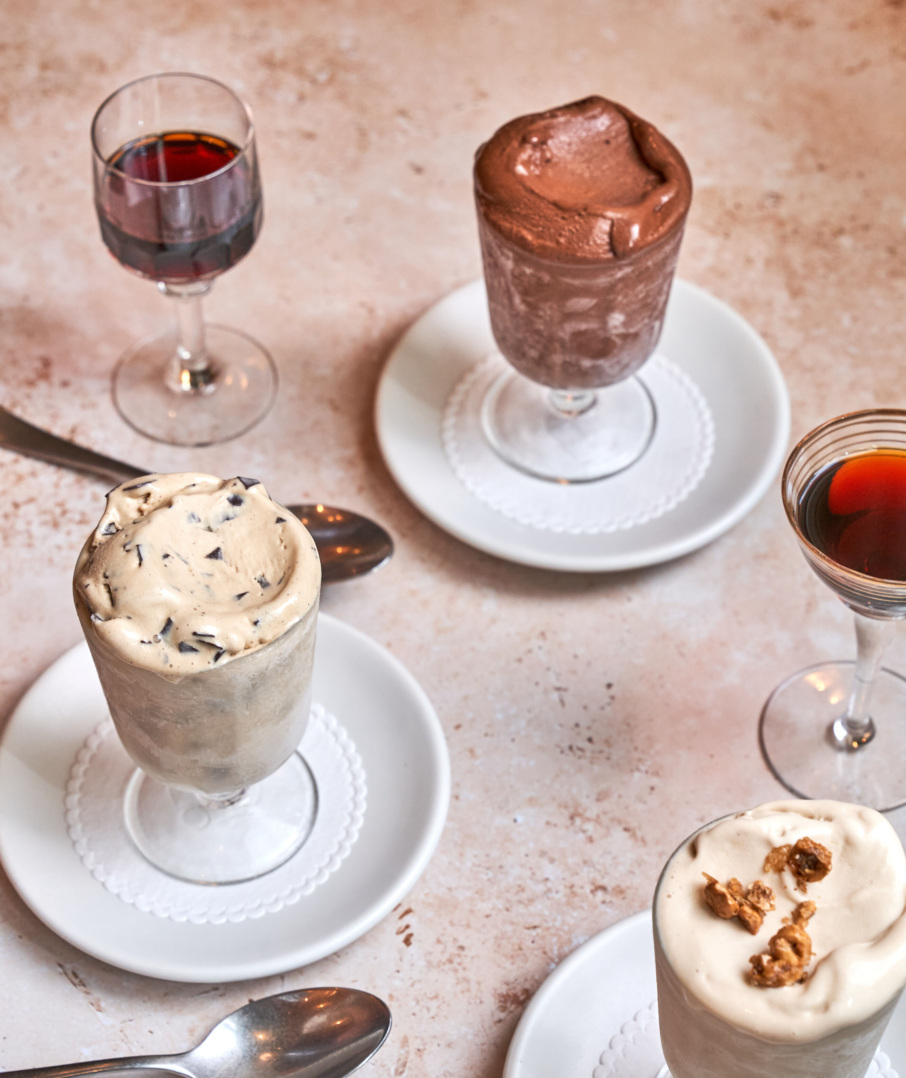
How did your New York comeback happen?
I sold the inn in January 2020. Then I called Danny [Meyer, founder and CEO of USHG], because there was no one else I wanted to work for. Because I believe in his vision. Yes, USHG has gotten bigger, more corporate, but their core beliefs are still there. During our call, Danny reminded me of my exit interview where I promised never to work for another restaurateur. This was in February of 2020 when we spoke, and soon I went in to talk with USHG’s new corporate director, Chip Wade. I arrived at our breakfast meeting and here was Chip saying they’ve just laid off 40 people due to pandemic! Suddenly my own plans felt so insignificant. I laid low for almost a year, then texted a Christmas greeting to Danny. And then he asked if I wanted to restart our previous conversation!
You made your re-entry to New York with a strawberries-and-cream scone for Daily Provisions. And it became the talk of the town.
And I find that so funny! But guess I like to make the simplest things complicated, to turn a classic into a challenge. I wanted something seasonal, extremely “strawberry-ish.” Fresh berries weren’t bright enough; I experimented with dehydrated, then tried to combine the two in the dough. Then I sandwiched strawberry jam and cream in the middle. It was something “of the moment,” not even replicable.
By then Ci Siamo was in the works. You were to be in charge of its pastry program.
Yes, Hillary [Sterling, Ci Siamo’s chef] and I spent months doing R&D in the basement kitchen of Marta, the USHG pizzeria. The menu was Hillary’s; I was there to complement it. It was a “taste this and now taste that” kind of collab. Cooking in a vacuum is hard, so it’s a huge help to have someone with a different perspective and palate to offer opinions.
So how did you develop the sweet part of the menu? How does one generally develop a dessert menu for a new restaurant?
Like I say, I’m not a presentation person. I don’t really care how something will look in the end. I start with a flavor idea that’s in my head, then I work towards it. It helps if the restaurant has a concept, a country identity, so you can do some research. Because there’s nothing really ground-breaking and original left to invent; everything has been done before. Italian desserts? Simple, right? Gelato, biscotti … Hillary asked for a lemon tart. So I played around with the lemon curd, lightening the butter with olive oil. I also wanted an American lemon meringue element, but in a not-so-obvious way. So we ended up with an austerely presented wedge of intense lemon tart served with a quenelle of toasted meringue with a divot filled with lemon olive oil.
And those flower-shaped bomboloni? An instant new classic…
[Fleming laughs.] It was a sort of delightful mistake. To test the batter, I fried the circles leftover from cutting those Italian doughnuts. And I realized I wanted something you can tear into and share, something that would be fun to just pull apart in a warm, convivial way.
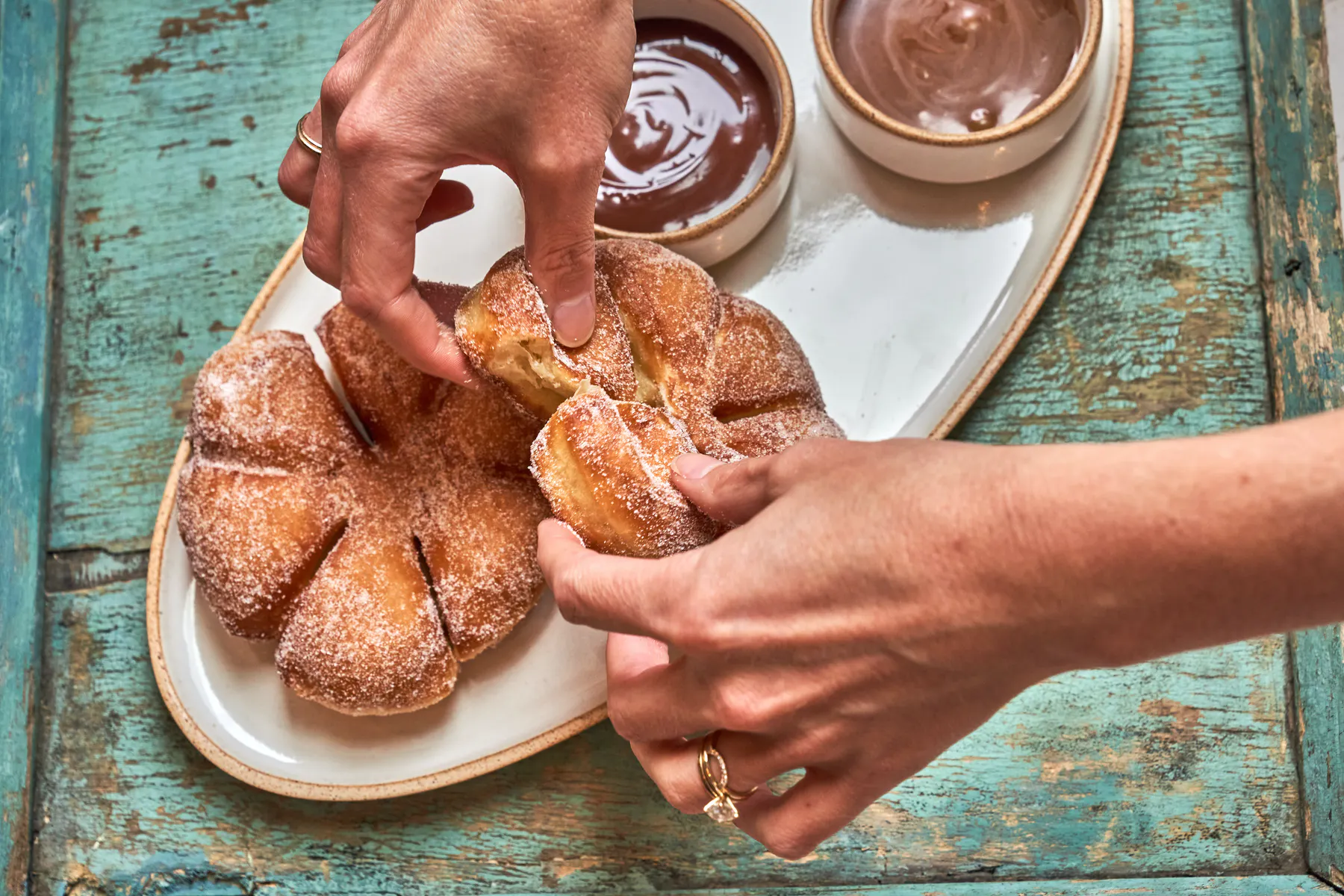
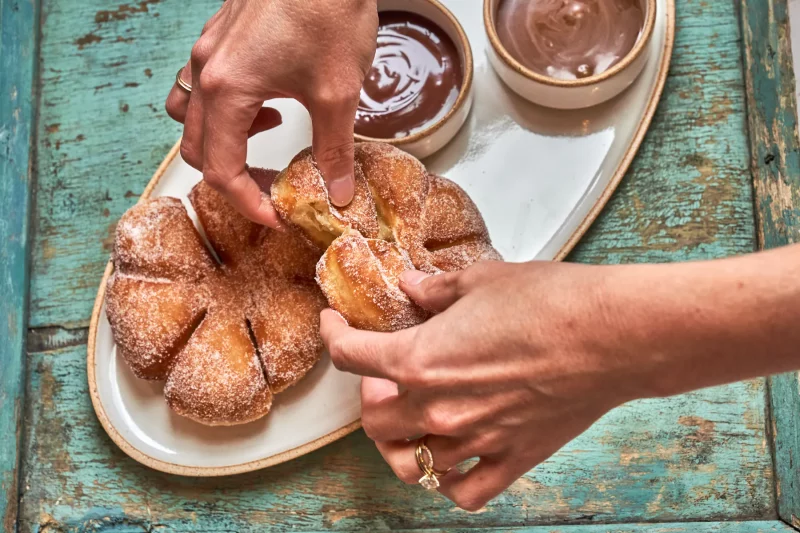
How had the dessert landscape changed since your days at Gramercy Tavern?
Things have gotten more basic, essential. A lot has to do with the change in the business. Pastry chefs used to be mandatory, sometimes there was a whole little army of them doing complicated multi-element things. And these pastry departments actually helped restaurants lose money. So already after the financial crash of 2008, restaurants started scaling way down on labor, making things simpler. Customers have changed as well. [They’re] not as adventurous maybe? Which for a pastry chef can be frustrating: You work on something so long, then people ask for shortbreads and doughnuts. At Gramercy Tavern, dessert was part of the prix fixe. With à la carte, even the act of ordering a sweet is a choice, an indulgence. And to satisfy that indulgence, people tend to go for something familiar, comforting. So yeah, the lemon torta sells the most at Ci Siamo.
So where is this pastry conversation moving after the era of elaborate flower-strewn plated desserts?
I feel bakeries are where it’s at. A lot of former fancy dessert people are opening indie businesses. And thanks to the Internet and social media, they can become huge. Think Dominique Ansel’s cronut!
How have the gender roles changed in the kitchen since your days at Gramercy Tavern?
When I went to Europe — France in particular — there were no women in pastry. I remember Pierre Hermé’s wife couldn’t believe that I ran a major dessert program. But in America it’s always been different; women almost traditionally took charge of sweets. What has changed is that you see many more women these days working the line, and overall getting more recognition.
So, what are your own food indulgences? Any guilty pleasures?
I rarely go out to eat, and don’t cook at home much either. Always working, then in bed by 10 p.m. But I’m a candy freak, since you asked. Yes, Twizzlers, Milky Ways from the newsstand. I love viennoiserie too, croissants and the like, from Dominique Ansel, for instance. And I can’t stay away from Christine Lisa’s chocolate caramel chunk cookies at Daily Provisions.
You have a new book coming out this fall: Delectable: Sweet & Savory Baking. Tell us more.
I wrote it during the pandemic on the North Fork, in a tiny kitchen with an electric stove. It was where I had all the time in the world to bake whatever I wanted, then put it in my neighbors’ mailboxes. Unlike The Last Course, it’s not a restaurant book; there’s not a single plated dessert there. Delectable is full of simpler things I myself I love to eat. Like mushroom sticky buns with pancetta and fresh and dried shitakes, for instance, with a miso glaze. Or a semifreddo which I make with marshmallow fluff instead of the classic Italian meringue. Or my dad’s favorite Mallomars cookies. Things to enjoy and to share. That’s always been so important for me.
Anya von Bremzen is a James Beard Award-winning book author and journalist based in Jackson Heights, N.Y. Follow her on Instagram. Follow Resy, too.




